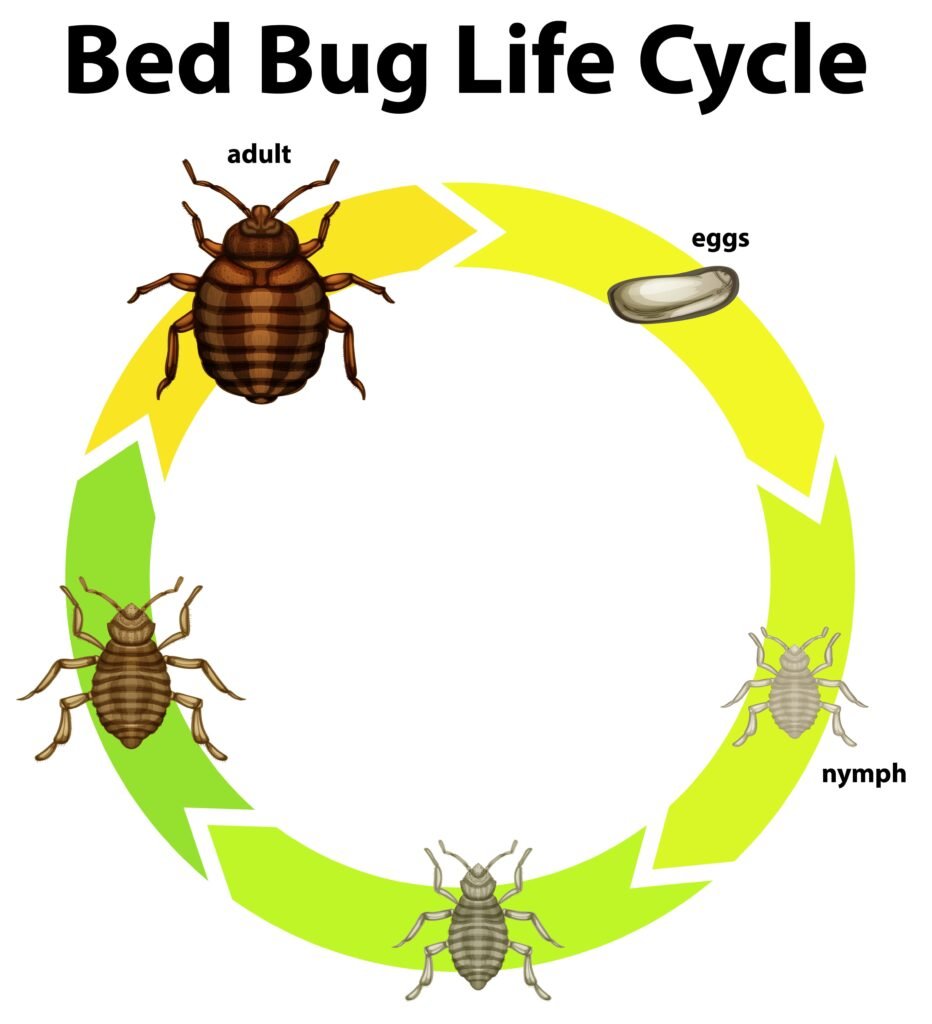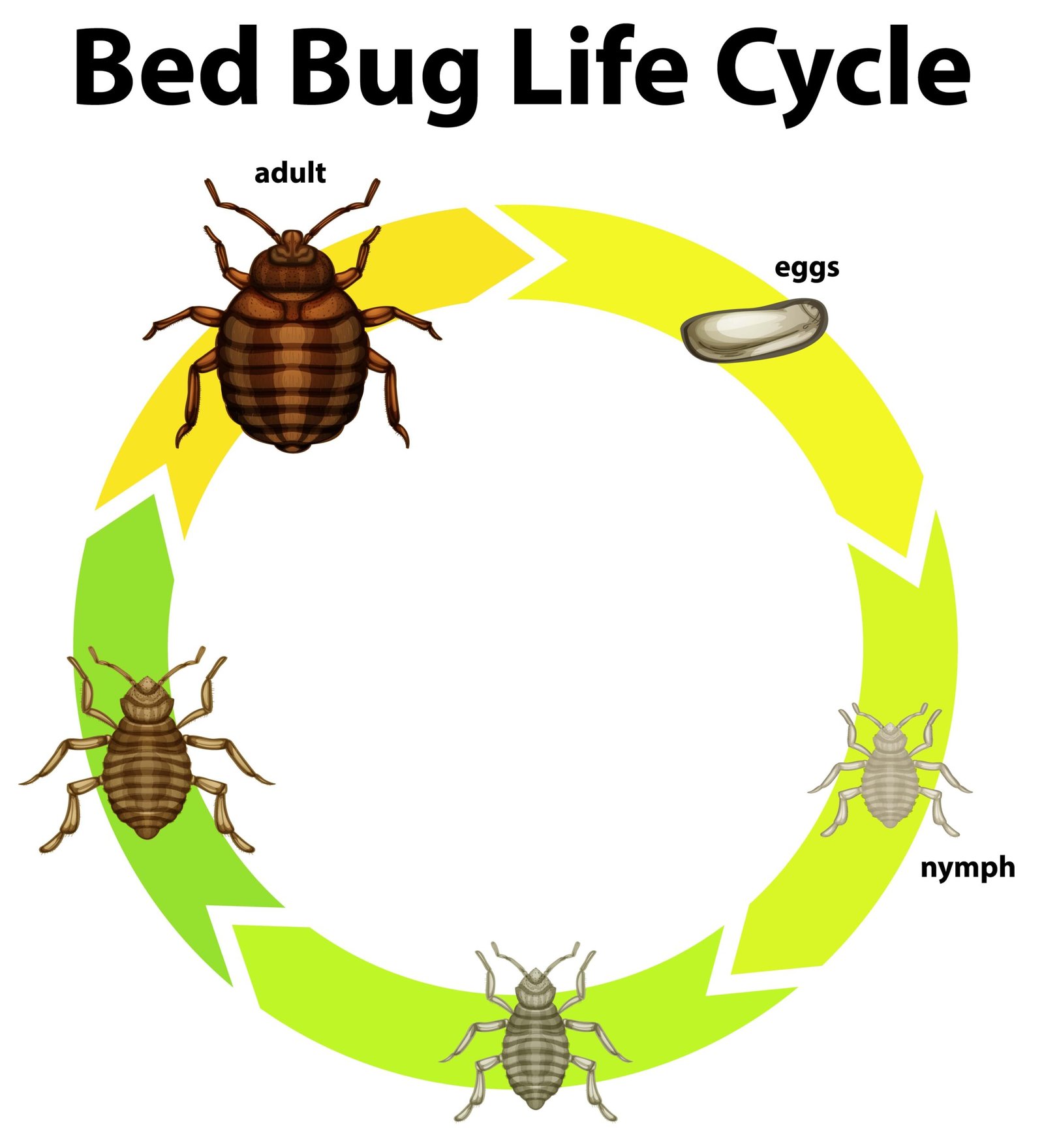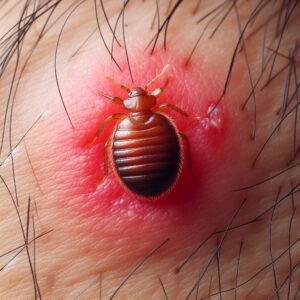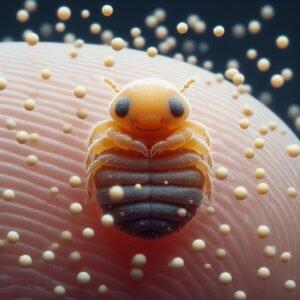Bed bug eggs take around 6 to 10 days to hatch. However, factors such as temperature and humidity can influence the incubation period.
Bed bugs are a notorious pest that can be extremely difficult to get rid of once established in a home. Understanding their tricky lifecycle is key to controlling infestations. One of the most critical details is knowing how long bed bug eggs take to hatch.
How Long Do Bed Bug Eggs Take to Hatch?

The Bed Bug Lifecycle
Bed bugs go through a simple metamorphosis that includes an egg, nymph, and adult stage. Females lay up to 5 eggs per day, cementing them in place in cracks and crevices near sleeping areas. The small white eggs are just over 1 millimeter in length. They swell and darken just before hatching as the developing nymph becomes visible inside.
Egg Production Potential is Alarming
A female bed bug can lay over 500 eggs in her lifetime under optimal conditions. The volume and itty-bitty size of the eggs means infestations often intensify before being detected. Learning how quickly eggs can hatch, and other development timetables of bed bugs, gives insight on detection and treatment timing.
Temperature Impact on Activity and Growth
Bed bugs prefer temperatures around 70-90°F. They typically become sluggish below 50°. Higher temperatures accelerate egg laying, nymph molting, and the bugs’ general pace and feeding activity. Cooler temperatures lengthen the development timeline. This temperature dependence influences how long bed bug eggs take to hatch…
Average Hatch Time is 6-10 Days
The tiny pearl-hued bed bug egg is hardy enough to survive for around 10 days seeking a blood meal to kickstart growth after emerging.
At Optimal Temperature, the Hatch Time is Just Over 6 Days
At room temperature, around 70°, bed bug eggs hatch in about 4.4 days on average. Warmer temperatures in the 80s quicken development. Cooler temperatures below 65° begin slowing things down.
Egg Hatch Times Expand as Temperatures Drop
If room temperatures drop down into the 60s, hatch time extends out to around 6 days. Some eggs may fail to hatch completely if temperatures drop below 50° for an extended period.
This temperature impact makes determining precisely how long bed bug eggs take to hatch challenging. There are certainly environmental factors beyond temperature affecting development as well…
Other Environmental Factors Influence Hatch Time
The small, fragile bed bug eggs do need a stable environment to successfully emerge. Factors like humidity, vibrations, and access to a host impact development time.
Moderate Humidity is Essential
Very dry air can shorten an embryo’s survival inside the egg case. But excessive moisture boosts risk for fungi destroying eggs. Maintaining moderate humidity helps enable successful hatching.
Vibrations May Incite Hatching
Interestingly, sensing vibrations from nearby host movement may help synchronize hatching. Bed bug eggs and hatched nymphs use biting cues like carbon dioxide, heat, and vibrations to know a blood meal is near.
Proximity to a Host Plays a Role
Newly emerged nymphs need to find a blood meal soon after hatching to reach maturity. Access to a slumbering human makes a difference in nymph survival rates.
Implications of Hatch Timeline for Treatment and Control
The 6-10 day hatch span, sometimes longer in cooler conditions, underscores key control points:
Frequent Inspection to Detect Newly Laid Eggs
Inspecting closely for the tiny white pods, especially along mattress seams and bed frames, marks areas for targeted treatment.
Careful Monitoring of Environmental Conditions
Keeping room temperatures from climbing excessively high, and maintaining moderate humidity, helps avoid skewing hatch times.
Swift Precision Treatment After New Eggs Found
Whether using steam, residual insecticides, or traps – fast deployment after new eggs spotted curbs nymph numbers. Clear all items near the bed to leave eggs exposed.
How long can bed bug eggs survive?
Bed bug eggs can survive for surprisingly long periods of time, often 10 months or longer, under the right conditions.
Here are some key details on bed bug egg survival times:
- Unhatched Eggs – Eggs that have not yet developed embryos inside can survive for around 10-12 months without hatching. They are resilient to harsh conditions and can essentially pause their development while waiting for the right environment.
- Hatched Eggs – Once embryos have developed inside the eggs and are ready to hatch, they can survive inside the egg case for 2-3 months without finding a blood meal. This allows them to hatch when hosts become available.
- Ideal Conditions – At normal room temperatures around 70°F-80°F, bed bug eggs have some of the highest survival and fastest development rates. Warmer temperatures allow quicker hatch times. Cool and humid environments also support longer viability.
- Lower Temperatures – In colder conditions, below about 50°F, bed bug eggs enter a state of diapause where development stops completely. This suspends hatching until temperatures rise again. During this dormancy, eggs can survive many months to over a year.
- Resilience Factors – The oval-shaped design and rigid shell of bed bug eggs help maintain internal moisture and protect the embryos inside from external threats. Their small size also allows them to survive in tiny spaces.
How long after mating do bed bugs lay eggs?
Bed bugs can lay eggs very quickly after mating. The typical timeline is:
- Mating Occurs – Male and female bed bugs mate, with the male piercing the female’s abdomen with his reproductive organ to fertilize the eggs internally. Mating can occur multiple times.
- Eggs Develop – Sperm from mating allows egg development to begin inside the female. It takes just 1-3 days for eggs to fully develop after successful fertilization.
- Egg Laying Begins – A pregnant female bed bug can start depositing eggs as early as 4-6 days after initial copulation with a male.
- Egg Laying Continues – Once she begins laying, a female can produce 1-5 eggs per day. A single bug may lay over 200 eggs in her lifetime in favorable conditions.
So the total time from mating to egg laying can be as little as 4-6 days before egg deposition starts. Warmer temperatures accelerate this timeline, while cooler weather can slow down development slightly.
But what is certain is that a single mating encounter can give rise to many eggs in a short period of time, fueling bed bugs’ rapid population growth. This is why early control is crucial. Monitoring for the signs of adults and acting fast limits their reproduction ability.
Related post What Do Bed Bug Eggs Look Like?
So while exact survival durations depend on conditions, bed bug eggs can persist up to 12 months or more before finally hatching under the right circumstances. Their hardy design allows the next generation to emerge when the time is right.
The Takeaway on How Long Bed Bug Eggs Take to Hatch
Bed bug eggs can hatch any time between 6-10 days, occasionally longer if temperatures dip lower. This hatch range means vigilant monitoring is required. Don’t let the small size of bed bug eggs fool you.
Unchecked, an infestation can explode in numbers. Stopping momentum requires understanding their biology and habits inside your home. With close inspection and properly timed treatment, you can break the bed bug lifecycle.





